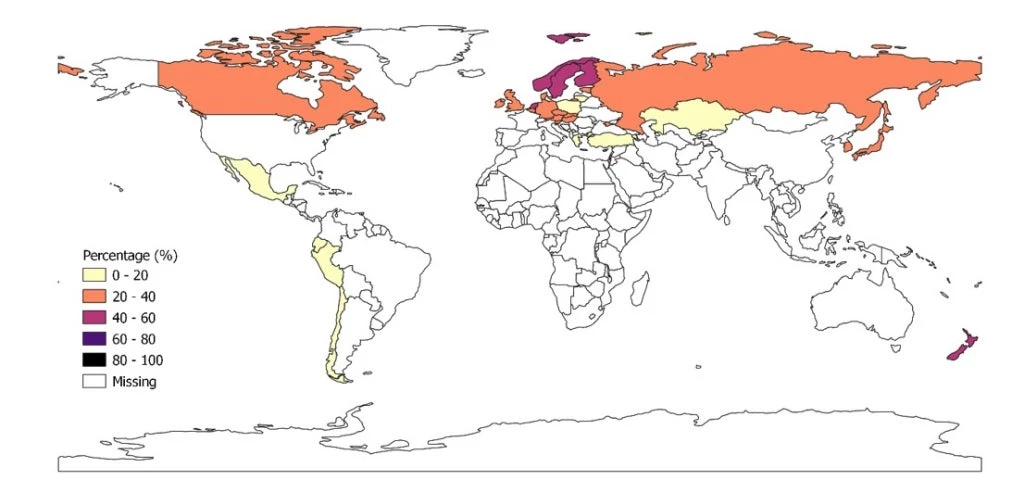 Youth working at GhanaTechLab and Ghana Innovation Hub. Developing digital skills can help young people take advantage of emerging job opportunities. Copyright: Erick Kaglan/World Bank
Youth working at GhanaTechLab and Ghana Innovation Hub. Developing digital skills can help young people take advantage of emerging job opportunities. Copyright: Erick Kaglan/World Bank
Half of the global population today is below 30 years old, and this share will reach almost 60 percent 10 years from now. Given these demographic trends, youth have the potential to become a critical engine for global development if provided with the knowledge and job opportunities they need to thrive.
In December 2009, the United Nations General Assembly adopted August 12 as the International Day of Youth, calling upon governments, civil society, individuals, and communities worldwide to celebrate the potential of youth as partners in today’s global society.
Today’s youth face new global challenges, such as automation, climate change, and the digitalization of products and services. Recent international reports coincide in identifying skills development for youth as a main engine to ensure a smoother transition towards a greener and more digital world. In this context, this year’s International Youth Day theme focuses on youth skills development for a sustainable world. Also, the international community has set ambitious targets to ensure that youths globally acquire basic digital skills.
The digital and green transition could become a cornerstone for youth development
The digital and green transitions can create new employment and training opportunities for young people, especially in low- and middle-income countries. Online and low-cost learning platforms such as Coursera, Khan Academy, EdX, and “Capacitate Para el Empleo” offer new opportunities for young people to develop their skills and gain experience.
The digital transition has also created new job opportunities in fields such as digital marketing, software development, and data analysis. These jobs often require skills that can be learned through online courses and training programs, making them more accessible to young people who may not have the resources to attend traditional universities or vocational schools. In addition, the COVID-19 pandemic has accelerated the trend toward remote work, which has opened job opportunities for young people who live in locations with limited employment opportunities.
Similarly, the global transition to a green economy creates new job opportunities for youth in renewable energy, energy efficiency, sustainable agriculture, and agrotech. Available data indicate that demand for green jobs in many countries has almost doubled in the past five years.
Many young people in developing countries, especially women, are at risk of being left behind from these emerging opportunities
Unfortunately, a significant skills gap amongst youth worldwide may hinder their ability to take advantage of these emerging digital and green opportunities. According to available data, less than 40 percent of youth in high- and upper-middle-income countries have minimum digital literacy proficiency. Data are unavailable in most low- and middle-income countries, where digital skills gaps are likely the largest (Figure 1).
The digital skills gap is most likely to affect young women. According to available data, some 327 million fewer women worldwide than men have smartphones and can access the mobile Internet. Women are under-represented in ICT jobs and only 0.5 percent of young women, on average, wish to become ICT professionals, compared to 5 percent of young men.
Figure 1: Percent of youth who have achieved at least a minimum level of proficiency in digital literacy skills.

In addition, the COVID-19 pandemic caused severe setbacks in youth human development, which exacerbated youth skills gaps amongst economically disadvantaged youth.
Global data show that seven out of every 10 youth globally do not have adequate access to education or employment opportunities that are conducive to skills development. This phenomenon is particularly acute in low- and middle-income countries, especially Latin America, South Asia, and Sub-Saharan Africa. Youth who do not acquire adequate skills during their basic-education schooling years, accounting for about 6 out of every 10 youth in low- and middle countries, are particularly vulnerable to suffering from skills stagnation later in life , according to available estimates.
Workforce development policies can boost youth success in the digital and green transition.
Improving youth skills for the digital and green transition requires a mix of solutions and a sustained approach.
- Governments must increase public expenditure, which generally underinvests in youth. Indeed, most countries channel public spending to the senior population (60+) and children below 15 years old. While these trends reflect fiscal obligations in pensions and investments in primary education, it is essential to open adequate fiscal space and develop partnerships with employers to invest in the skills and productivity of youth and adults, who are the main economic engine and taxpayers.
- It is imperative to sustain efforts to close the digital divide. Governments should continue investing in infrastructure to ensure high-speed internet is available in all areas, including rural and low-income communities. Moreover, governments and internet service providers need to develop programs capable of providing affordable internet access to low-income households and affordable devices such as computers, tablets, and smartphones.
- Youth workforce development programs should reinforce youth’s foundational skills, namely literacy, numeracy, socio-emotional, and digital literacy skills. These skills are cross-cutting, long-lasting and help youth to adapt to new technologies and benefit from existing digital opportunities for skills development and employment.
- Post-secondary education programs (formal TVET, higher education, and workforce development programs) should prioritize students’ development of digital skills and skills demanded for the green transition. Priorities entail (i) training youth to tap into available digital tools and platforms for education and employment, (ii) improving the academic offer of STEM and ICT programs, (iii) developing new programs and curricula relevant to the green economy; and (iv) investing in research and innovation to foster the growth of the digital and green economies. Moreover, education institutions must invest in the human and infrastructure resources necessary to improve the delivery of online learning.
- Governments must close the data gaps on youth digital skills, especially in low and middle-income countries and among young women. Governments should prioritize efforts to conduct assessments to identify digital skills gaps. These data would allow precise diagnostics of youth skills gaps, develop interventions to close them, and monitor progress. It will also be necessary for education systems and labor markets to develop accessible frameworks recognize and certify workers’ digital competencies.
With support from the Mastercard Foundation, the World Bank is developing a program to monitor the supply and demand of digital skills in sub-Saharan Africa. The program aims to develop, among other activities, a digital skills framework for Africa and develop an open-source assessment that governments and institutions could use to assess the digital skills of African students and teachers.
In summary, the digital and green transformations are crucial to building a more equitable and environmentally conscious youth development policy. Young people equipped with the skills necessary to benefit from the green and digital transitions will create a more sustainable future for all.
To receive weekly articles, sign-up here



Join the Conversation